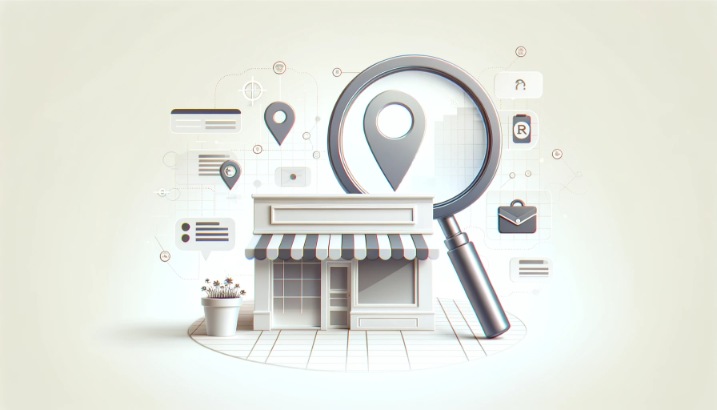Have you ever wondered about the steps involved in the process of graphic designing service? Well, look no further! In this article, we will explore the journey of a graphic designer from start to finish. Each step is crucial in creating visually appealing and practical designs, from the initial client briefing to the final digital design. It begins with understanding the client’s requirements and gathering inspiration through research. Then, concepts start taking shape through sketching and wireframing. Finally, the magic happens as the design comes to life digitally. So, if you’re curious about the key steps in the graphic designing process, keep reading to unveil the secrets of this creative field.
Client Briefing
First, you will receive a detailed client briefing outlining the specific requirements and goals of your graphic design project. This initial step is crucial as it sets the foundation for a successful collaboration. Client communication plays a vital role in understanding their vision and objectives. You can gain insights into their brand identity, target audience, and desired message through effective communication. This information will guide you in creating a design that aligns with your goals.
During the briefing, you will discuss design requirements such as color schemes, typography, and style preferences. Understanding these requirements is essential for creating a design that looks visually appealing and effectively communicates the desired message. The client may also provide specific guidelines, such as incorporating their logo or adhering to brand guidelines.
By actively listening and asking clarifying questions, you can ensure that you fully comprehend the client’s expectations. This open line of communication allows for a collaborative approach, where you can offer suggestions and insights while keeping the client’s vision at the forefront.
Research and Inspiration
After receiving a detailed client briefing and understanding their design requirements, you can now delve into the next step of the graphic design process: conducting research and seeking inspiration. This crucial phase of the creative process allows you to gather information and explore various design trends that can influence your work. Here are four essential steps to consider during this phase:
- Immerse Yourself in the Design World: Stay up-to-date with current design trends by following design blogs, attending conferences, and exploring design platforms like Behance and Dribble. Surround yourself with design inspiration to fuel your creativity.
- Analyze the Target Audience: Understand who the design is intended for and research their preferences, interests, and behavior. This will help you create a design that resonates with the audience and effectively communicates the desired message.
- Explore Similar Projects: Look at past projects and case studies that align with your client’s industry or design style. Analyze successful designs and identify elements you can incorporate or improve upon in your work.
- Brainstorm and Sketch Ideas: Let your imagination run wild and generate multiple design concepts. Sketching allows you to quickly visualize ideas and explore different possibilities before moving on to the next phase.
Concept Development
During concept development, you will refine and solidify your design ideas. This is where your creativity truly takes center stage. The first step in this process is idea generation. You must brainstorm and develop concepts aligning with the project’s objectives. Think outside the box and explore various possibilities. Once you have a range of ideas, it’s time for visual exploration. This is where you bring your concepts to life through sketches, mood boards, and digital mockups. Experiment with different color palettes, typography styles, and layout options to see what resonates best with your vision. Visual exploration lets you see how your ideas translate into actual designs and helps you make informed decisions. As you go through this process, you will refine and narrow your options until you have a proper concept. This concept development stage sets the foundation for the next step: sketching and wireframing. With your refined ideas, you can create more detailed sketches and wireframes to further flesh out your design and wireframing.
To develop your design further, you will now engage in sketching and wireframing. This step is crucial in creating a visually appealing and user-friendly design. Here are four reasons why pencil sketching and wireframing are essential in the graphic design process:
- Visual Exploration: Pencil sketching lets you quickly generate multiple design concepts and explore different ideas. It allows you to experiment and iterate before committing to a final design.
- User Experience Focus: Wireframing helps you create a blueprint of your design’s layout and functionality. It lets you plan and structure the user interface, ensuring a seamless and intuitive user experience.
- Collaboration and Feedback: Sketches and wireframes serve as practical communication tools. Sharing your ideas visually with clients or team members fosters collaboration and encourages valuable feedback at an early stage.
- Efficiency and Cost-Effectiveness: By sketching and wireframing, you can identify potential design issues and make necessary adjustments before investing time and resources in the digital design phase. This saves both time and money in the long run.
Now that you have a solid foundation with your sketches and wireframes, it is time to move on to the next step: digital design.
Digital Design
Once you have completed the sketching and wireframing stage, it is time to transition into the digital design phase. This is where you bring your ideas to life on a screen. Digital design focuses on creating user interfaces that are visually appealing and communicate effectively. It involves using software tools such as Adobe Photoshop or Sketch to design the layout, color scheme, typography, and other visual elements.
The user interface is a critical aspect of digital design. It refers to the way users interact with a digital product or service. The goal is to create an intuitive and user-friendly interface that guides users through the design and allows them to achieve their goals quickly.
Visual communication is also an essential part of digital design. It uses visual elements like images, icons, and illustrations to convey messages and enhance the user experience. By strategically placing visual elements, you can draw users’ attention to important information and create a visually engaging design.
During the digital design phase, it is crucial to carefully consider the user interface and visual communication to ensure a seamless and visually appealing design. Remember to keep your design concise, visually engaging, and user-friendly to create a successful digital product or service.
Frequently Asked Questions
How Much Does Graphic Design Services Typically Cost?
Graphic design services typically cost based on various factors such as complexity, scope, and experience. Pricing models can range from hourly rates to project-based fees. Considering these factors is essential when determining the cost of graphic design services.
What Software Tools Are Commonly Used in the Steps in the Graphic Designing Process?
Popular design software tools like Adobe Photoshop, Illustrator, and InDesign are commonly used for the graphic design process. These tools help you create visually stunning graphics and bring your ideas to life.
Are There Any Copyright or Licensing Concerns When Using Stock Images in Graphic Design Projects?
Be mindful of licensing concerns when using stock images in your graphic design projects. Ensure you have the proper rights and permissions to use them to avoid any legal troubles.
How Long Does the Entire Graphic Design Process Usually Take From Start to Finish?
From start to finish, the graphic design timeline depends on various factors. It includes research, concept development, design creation, revisions, and finalization. The length can differ based on project complexity, client feedback, and collaboration.
Are Revisions and Edits Included in the Graphic Design Service, or Is There an Additional Fee for Changes?
There’s good news regarding revisions and edits for your graphic design service! They’re included in the package, so there is no need to worry about additional fees. You’re in good hands!



